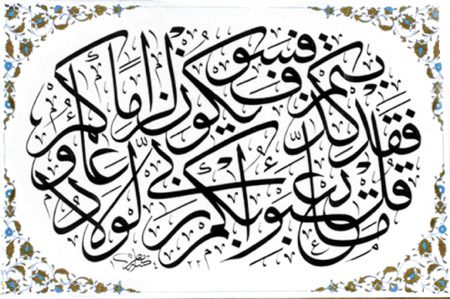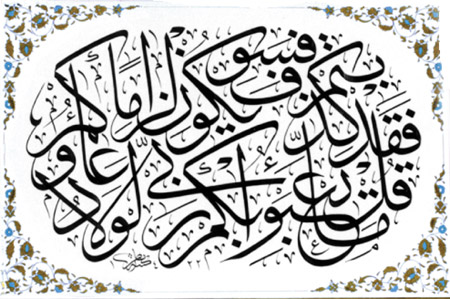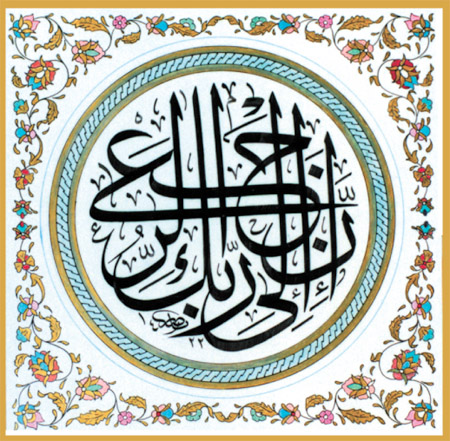
The Art of Islamic Calligraphy “Calligraphy is the Mirror of those who Realize the Beautiful Essence of Things” [Archives:2001/34/Last Page]
August 20 2001


Q: First of all, could you please give us a brief account of yourself?
A: I was born in 1974, in Al-Kabitah. In January 12,1995, I was a member of the Iraqi Calligraphers Association. I also studied Persian Calligraphy and at that time I was apprenticed by the Iranian calligraphers, Fath Ali and Farhani.
Q: In your point of view, what are the reasons behind your receipt of the First Certificate of Merit in Turkey in 2001?
A: The Islamic Research Center in Istanbul granted me this certificate which can be ascribed to a number of reasons. The portrait which I had done was similar to the rules of the Islamic Calligraphy in its form and in its style. It was one of the 885 portraits. Yemen at that time had no reputation at all, so I did my best to represent Yemen through this Center in my masterpieces.
Q: What is the proper way of learning calligraphy, particularly those who wanted to be professional or amateurs?
A: The proper way of learning is through practice or by an apprentice.
Q: How do you begin your profession as a calligrapher?
A: I was deeply impressed by that kind of animal, that was, horse and my beginning started with that animal which signifies pride, dignity and confidence. In my lifetime I didn’t receive any encouragement from my family or from anyone, even my grandfather himself didn’t encourage me. With the passage of time I began to practice calligraphy by myself. I bought a writing book and began to imitate Hashim Al-Bghdady’s calligraphy. I was deeply influenced by his productions. I also apprenticed by the Sudanese teacher, Ibraheem Al-Fadhel.
Q: Could you possibly tell us about the Arabic calligraphy in its golden era?
A: The calligraphy at that time was in its pure perfection, most of the Arab sciences were written by hand. The calligrapher was highly respected by Caliphs as well as by the ministers of the State. Even one of the Abbassid State appointed Bin Mokla as a ruler to one of His ministers and the schools at that time were widely opened at that time, particularly, during Ottoman Empire. It held a prestigious position. There were eminent calligraphers at that time.
Q: Were there schools for calligraphy in Yemen as that in Egypt and Iraq?
A: Yes, there was only one school in our country, that was the school of the deceased, Mohammed Adulwahab Noaman. He was one of the skillful calligraphers.
Q: How do you comment on this expression ” the reason of the man’s greatness is a woman” ?
A: In my point of view, I was greatly encouraged by my wife and become one of the successful calligraphers.
Q: How do you evaluate the Arabic calligraphy? A: Calligraphy is the mirror of those who realize the beautiful essence of things. The brush of the artist or the pen of the calligrapher is the compass and the ruler of his masterpieces.

——
[archive-e:34-v:2001-y:2001-d:2001-08-20-p:./2001/iss34/lastpage.htm]


